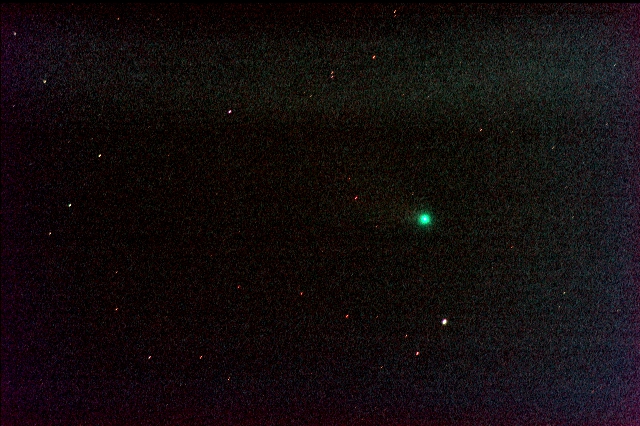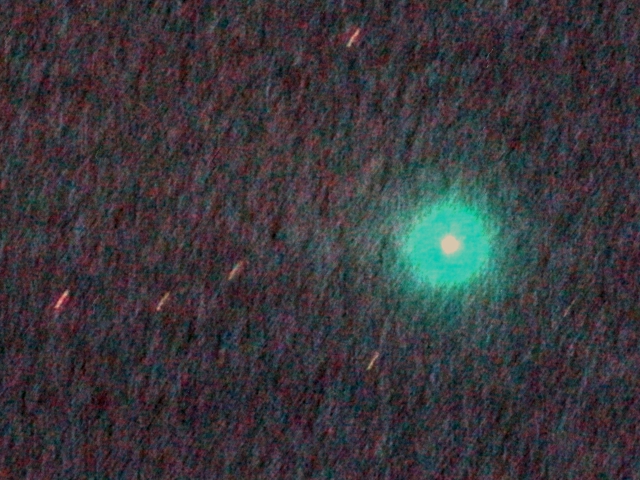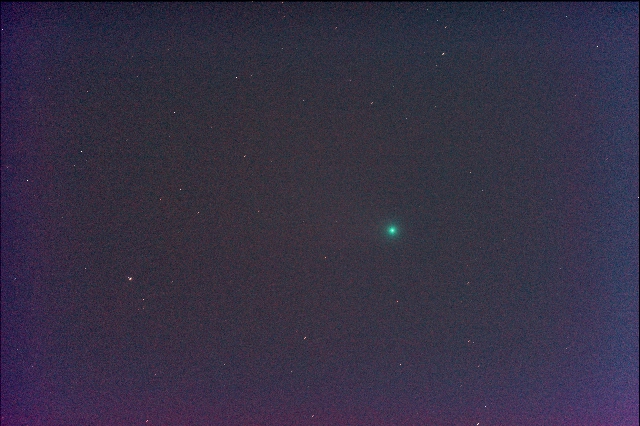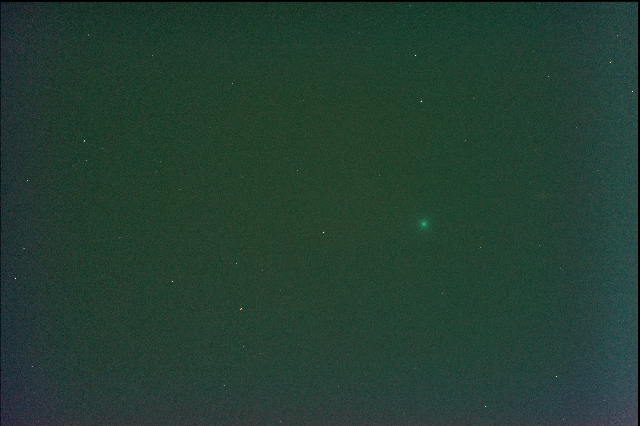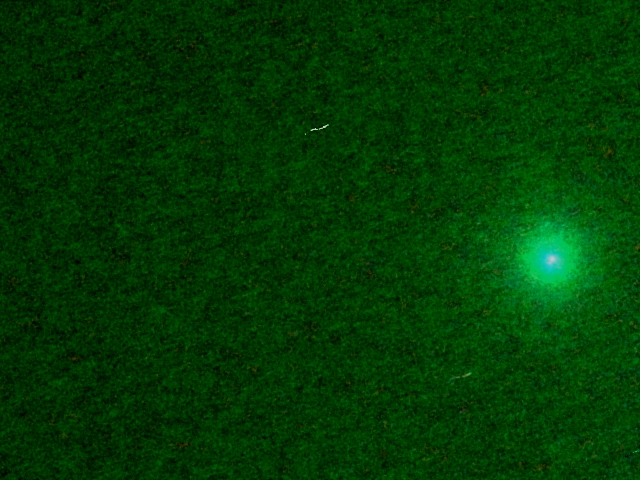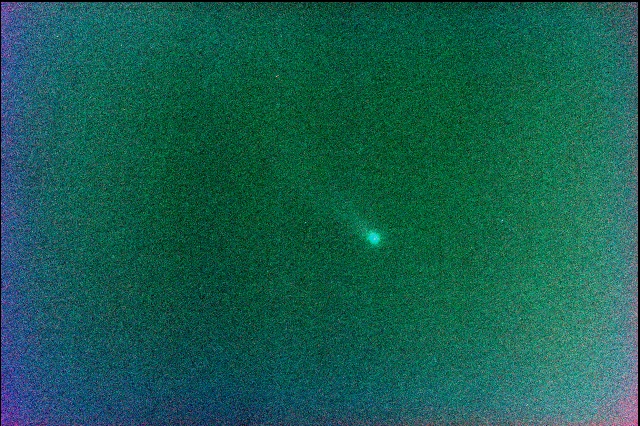
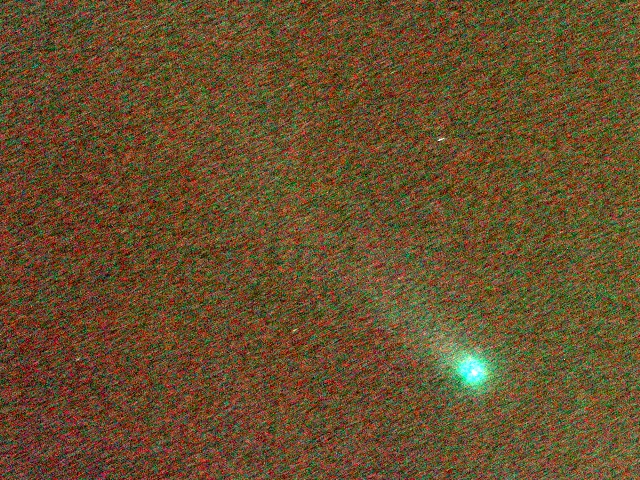
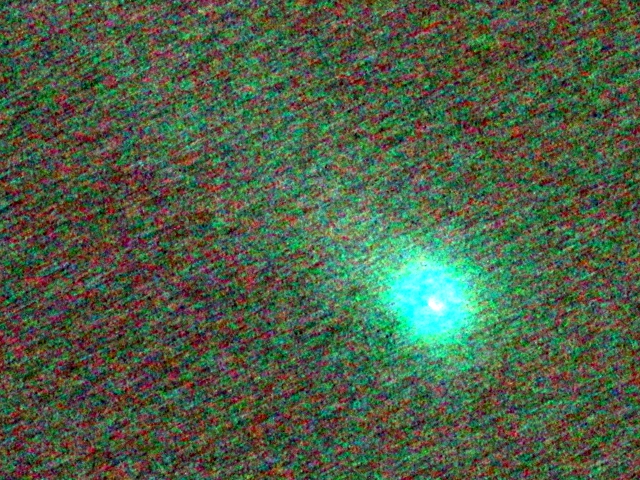
C/2020 F3 NEOWISE
2020-07-23T20:02:41/20:06:54(+8sec)までの8秒間露光14枚を合成
露光時間:8秒*14=1分52秒 ISO1000 長秒時ノイズリダクションをオン
t-T=+/-00sec
Vixev80/400mm + LPS-P2 + 60D / EM200Temma2
StellaImage6.5で合成、レベル補正とリサイズ
2000*1500を切り取り、640*480にリサイズ
|
C/2020 F3 NEOWISE From Wikipedia, the free encyclopedia Jump to navigation Jump to search C/2020 F3 (NEOWISE) or Comet NEOWISE is a long period comet with a near-parabolic orbit discovered on March 27, 2020, by astronomers during the NEOWISE mission of the Wide-field Infrared Survey Explorer (WISE) space telescope. At that time, it was an 18th-magnitude object, located 2 AU (300 million km; 190 million mi) away from the Sun and 1.7 AU (250 million km; 160 million mi) away from Earth.[3] By July 2020, it was bright enough to be visible to the naked eye. It is one of the brightest comets in the northern hemisphere since Comet Hale?Bopp in 1997. Under dark skies, it can be clearly seen with the naked eye[4] and might remain visible to the naked eye throughout most of July 2020.[5] As of July 23, the comet is about magnitude 3,[6] but binoculars are required near urban areas to locate the comet. For observers in the northern hemisphere, the comet can be seen on the northwestern horizon, below the Big Dipper. North of the 45th parallel north, the comet was visible all night from July 14-22 because it was circumpolar. On July 17, Comet NEOWISE entered the constellation of Ursa Major, below the asterism of the Big Dipper (The Plough).[7] ****************************************** THE COLORS OF COMET NEOWISE: On July 23rd, Comet NEOWISE (C/2020 F3) made its closest approach to Earth for the next 6,800 years. Michael Jaeger of Martinsberg, Austria, took advantage of the comet's proximity for a close-up photo, and he found some marvelous colors: Now we can take a color-coded tour of Comet NEOWISE: The comet's head is green. This is a sign of diatomic carbon, C2, a gas which emits a verdant glow in the near-vacuum of interplanetary space. The comet's ion tail is blue. Once again, carbon is involved. One of the most abundant gases in comets is carbon monoxide (CO). When CO flows away from a comet's nucleus, it is ionized by solar UV radiation. Carbon monoxide ions (CO+) glow blue when they recapture electrons from the solar wind. The comet's dust tail is wan yellow. It is, simply, the color of sunlight reflected from comet dust. The two tails are nicely separated, revealing their individual colors, because they are guided by different forces. The gaseous ion tail is shoved directly away from the sun by solar wind; it acts as a kind of interplanetary windsock. The heavier dust trail, however, isn't so easily pushed around. Specks of dust are like bread crumbs dropped on the comet's orbit; they curve away from the ion tail, tracing the comet's "footsteps" instead of the local breeze. https://www.spaceweather.com/ 2020-07-26 **********************************************
|
2020年07月23日 3.9等



